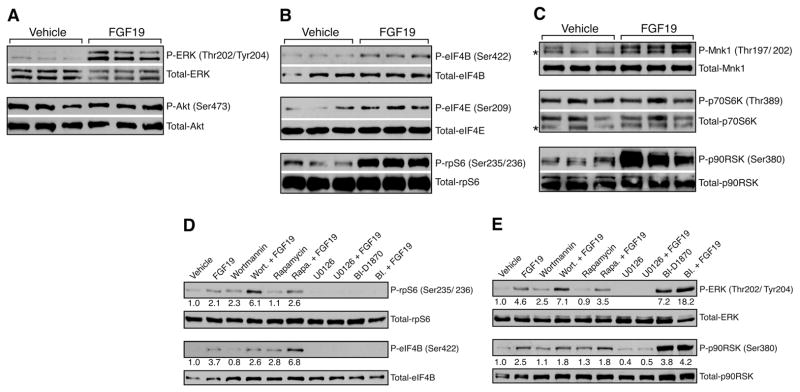Fig. 1.
Stimulation by FGF19 of signaling pathways that regulate protein synthesis in liver. (A to C) Mice fasted overnight were injected intravenously (i.v.) with vehicle or 1 mg of FGF19 protein per kg of body weight. This concentration is based on the optimal systemic dose to observe the physiologic effects of FGF19 on bile acid metabolism. The animals were killed 1 hour after the injections. Proteins from liver homogenates were separated by SDS–polyacrylamide gel electrophoresis (SDS-PAGE) and identified by Western blotting with the indicated antibodies. Results represent triplicate experiments. (D and E) Overnight serum-starved HepG2 cells were starved for amino acids in Hank’s buffered salt solution medium for 1 hour. Vehicle, wortmannin (200 nM), rapamycin (20 nM), U0126 (10 μM), or BI-D1870 (10 μM) was added for a further 1-hour treatment. The cells were treated with vehicle or 250 ng/ml FGF19 and harvested after 30 min. Proteins were identified by Western blotting with the indicated antibodies. BI-D1870 treatment blocks the negative-feedback effect of p90RSK on ERK, which results in increased basal phosporylation of ERK and p90RSK. Numbers below blots represent fold-change relative to the vehicle group. Asterisk (*) marks nonspecific band (C).

